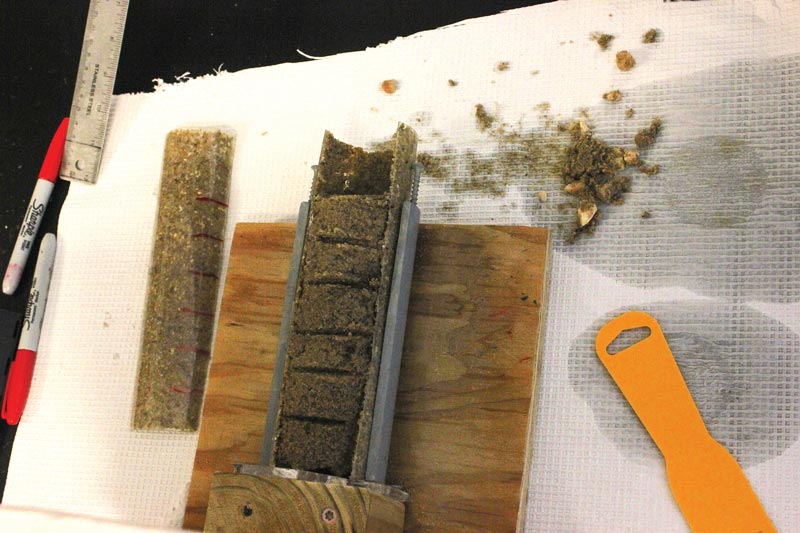
Photo by Daniel Freund
Research has shown that using soil surfactants can enhance vertical soil movement and distribution of pesticides. Mefenoxam, a fungicide commonly used for preventive disease suppression of Pythium species, has physiochemical properties (Ks = 26,000 milligrams/liter; KOC = 20 to 790) that suggest it may readily distribute through the soil profile.
In a lab experiment, 14C-mefenoxam was quantified within soil column depths of 0 to 1, 1 to 2, 2 to 3, 3 to 4, 4 to 5, and 5 to 6 inches (90:10 sand:peat by volume) in an attempt to elucidate vertical distribution when paired with a soil surfactant.
The soil surfactant Cascade Plus was applied at 0.25% vol/vol (0.31 cubic inch/column) to unique soil columns 24 hours before applying 14C-mefenoxam (0.68 pound/acre; 11.37 cubic inches/column) to the soil surface. Immediately following the mefenoxam application, 0.25 inch of irrigation was applied to all columns. Soil collection occurred at 0, 3, 7, 14 and 21 days after treatment.
Regardless of soil surfactant use, the majority of 14C-mefenoxam was detected in the 0- to 1-inch depth (85% to 100% of applied), with less detected in the 1- to 2-inch depth (1% to 11%). 14C-mefenoxam was not detected beyond the 2-inch depth across collection timings. Pooled over collection timings, in the 1- to 2-inch depth, more 14C-mefenoxam was detected when applied with a surfactant (5.8% of applied) than when applied without a surfactant (2.9%).
These results illustrate the importance of adequate irrigation and the potential use of soil surfactants when targeting soil-borne pathogens.
— Daniel Freund; Travis W. Gannon, Ph.D.; and James P. Kerns, Ph.D., North Carolina State University, Raleigh, N.C.
Editor’s note: An earlier version of this summary was published in the 2018 ASA-CSSA Meeting Abstracts, ASA and CSSA, Madison, Wis.
Teresa Carson is GCM’s science editor.